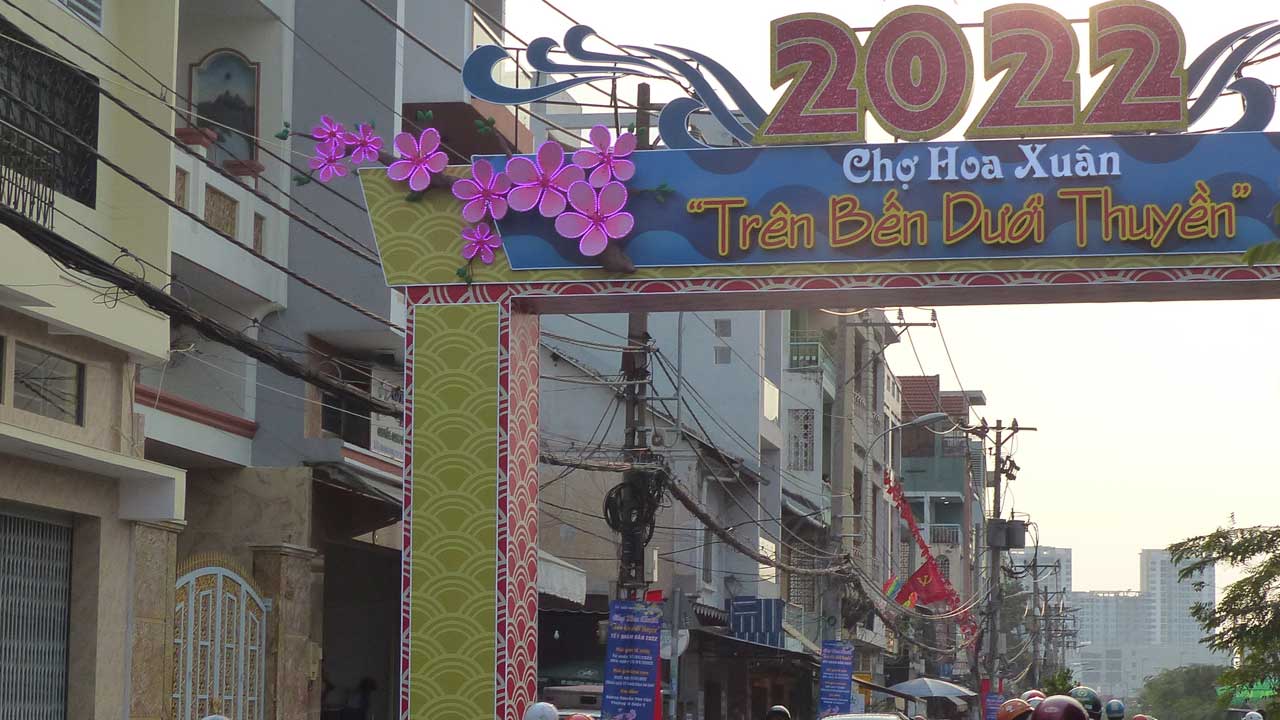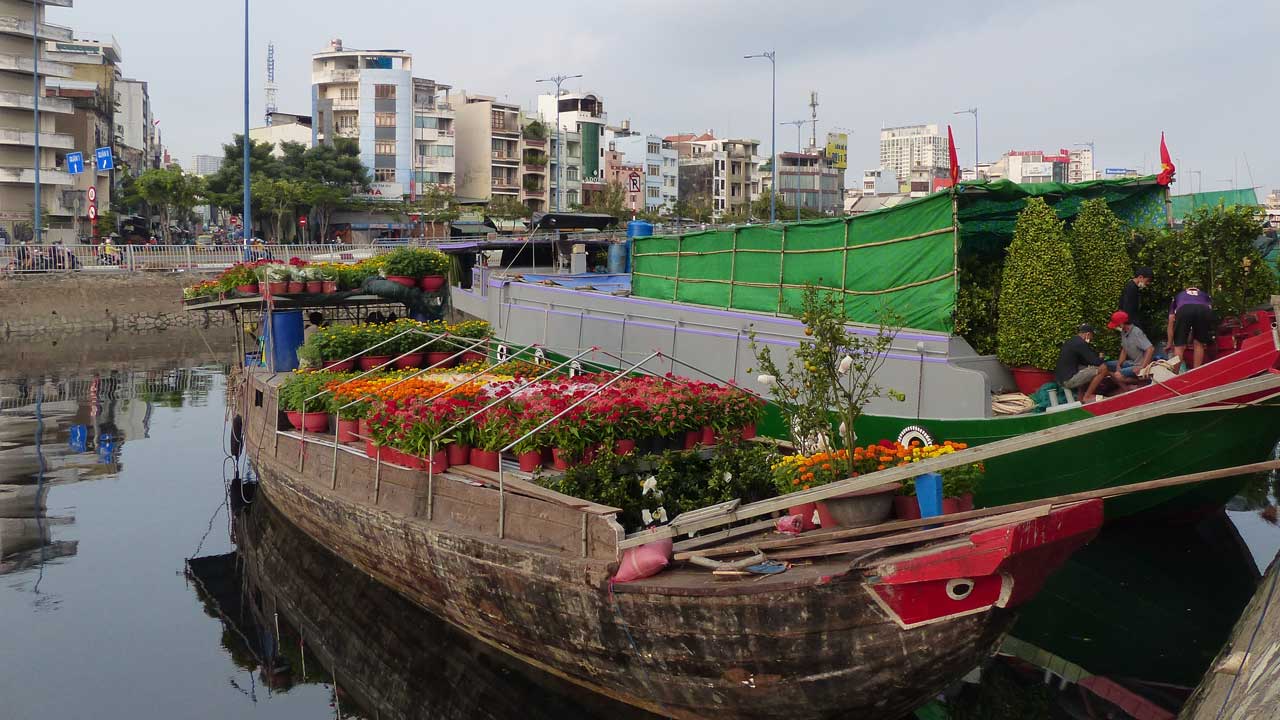The Binh Dong Wharf, which has been in existence since ancient times, bears the imprint of old Saigon with its distinctive feature “above the pier, under the boat”.
Binh Dong Wharf is located on the side of the Tau Hu Canal, parallel to the Vo Van Kiet Boulevard, now in District 8 of Ho Chi Minh City. In the run-up to the Lunar New Year, Binh Dong Wharf is at its colorful best with boats covered in blue, red, purple and yellow flowers lined up. Most often, the boats come from the Mekong Delta.

Lively scene before Tet
Before Covid and the days before Tet, Binh Dong wharf is at its liveliest, joining the category of “seasonal” tourist destinations for some domestic and foreign tourists. It’s not uncommon to see tourists flock to the wharf to take photos or record videos of the scene “above the pier, under the boat” in the run-up to the Lunar New Year.
As for me, I head there to take photos and videos this time every year to send to my relatives and friends abroad. They miss Saigon, but don’t have enough money to fly back.
This year, I don’t know whether I will be able to take photos or film again or not.
In the past, as soon as I reached Binh Dong wharf, I always walked down the street at the end of the road leading to Cho Lon canal to take pictures, videos or to chat with merchants.
Before the pandemic, the area was synonymous with noisy transactions, sometimes even the strident shouts of people under the boat with those on the riverbank, and vice versa.
I would also visit the warehouses selling rice, green beans and red beans along the Me Coc wharf in District 8 of Saigon – Ho Chi Minh City. The area was like an oasis; many places were actually flooded all year round.
Every time there was high tide, the water would rise and if it rained, the whole area would be inundated. People who lived here and wanted to visit the market had to use a canoe, such as visiting the floating market in the Mekong Delta!
In the early 1980s, water spinach was grown on the land along the Lo Gom Canal, while some places saw grass growing abundantly as it did hundreds of years ago, without any sign of human presence.

Mekong Delta Fruits year-round
At the Binh Dong wharf, on an ordinary day, each boat also doubles up as a merchant’s home. These boats come from the southwestern provinces such as Long An, Tien Giang, Ben Tre, Vinh Long, Soc Trang and An Giang. The goods transported to Ho Chi Minh City are usually fruits, flowers and agricultural products.
During any season, most of the Mekong Delta fruits are available at the Binh Dong pier, such as bananas, jackfruit, coconuts, mangoes, papayas, rambutans, etc. The goods from the canal boats are brought to the wharf to be sold on the spot. This place is indeed a marketplace.

Customers simply stop along the street to buy the goods which are transported directly from the Mekong gardens to the city, making them cheaper than in real markets and supermarkets.
Although over time, the river and canal are no longer the main route, the wharf is not as busy as it used to be and is sometimes even quite deserted, but it still remains the destination and anchorage point for trading ships from the Mekong Delta.
Binh Dong Wharf was formed in the 19th century as part of the urban development of Gia Dinh – Saigon and is an important traffic and trade route for Saigon and its vicinity. This place was once the busiest trading spot in Saigon – Cho Lon.









